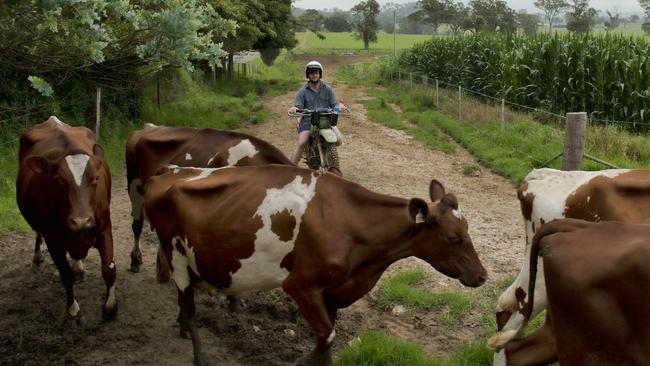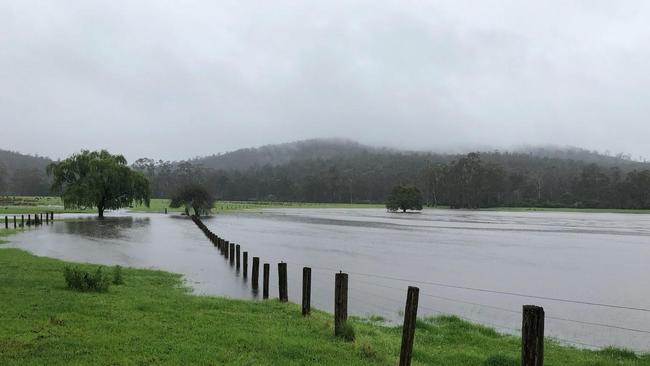November deluge: Genoa in Far East Gippsland records more than 300mm of rain in seven days
Some parts of far East Gippsland have recorded more than 300mm of rain in a week, following drought-like conditions for much of the year.
Game-changing rain has fallen in East Gippsland and the Bega Valley region of NSW, which have endured drought-like conditions for much of the year.
Seven-day rainfall totals of more than 200mm were commonplace across the Victoria-NSW border, with Genoa in Far East Gippsland the standout with 314mm for the week ending last Friday.
The bulk of heavy rain was confined to coastal areas, but some cropping districts where harvest is in full swing copped big daily falls including Ultima (90.2mm), Swan Hill (85.4mm) and Deniliquin (135.4mm).
Swan Hill had only had 17.4mm for November before last week’s rain after 5.4mm in September and 34.2mm in October.
It was a similar story at Deniliquin where there had been only 47.8mm for the month before the heavens opened last week.
Deniliquin and Swan Hill have now exceeded their long-term averages.
Despite large amounts of rain last week across much of Victoria and NSW, some regions are still short of long-term averages with less than a month remaining in 2023.

Bega recorded 229mm for the seven-day period ending Monday including 82.6mm on one day.
Dairy farmer Will Russell said the rain was welcomed, but the parched region “didn’t need it all at once”.
His farm had only had 350mm for the year before the heavens opened.
“Preceding this rain for some parts of the Bega Valley it has been the driest 12 months on record,” he said.
Bega recorded only 4.2mm of rain in September and Mr Russell had been hand feeding all his stock since March.
Bega has picked up another 36.6mm in the first few days of December with the town 93 per cent of the way towards its long-term average of 642.4mm.
Further south, Timbillica had 203.2mm in six days after having only 191.4mm in the previous six months.
It recorded the driest winter on record, with only 31.8mm falling in June, July and August.

Beef cattle farmer Robert Allan said it was also the second driest three-month period on record.
“Where we are here, we pick up the southerly rains from Victoria, but we just didn’t get them this year,” he said.
“They say it never rains but it pours.”
Despite heavy rain, many parts of East Gippsland are still short of the long-term average including Bairnsdale, which is only 88 per cent of the way with a combined 53.8mm in July, August and September before 128.2mm fell in October and 102.4mm last month.
Gelantipy has received just 80 per cent of its average with long overdue falls of 93mm in October, 149.6mm last month and 74.2mm already in December.
Omeo hit its average, helped by 275mm since October.




